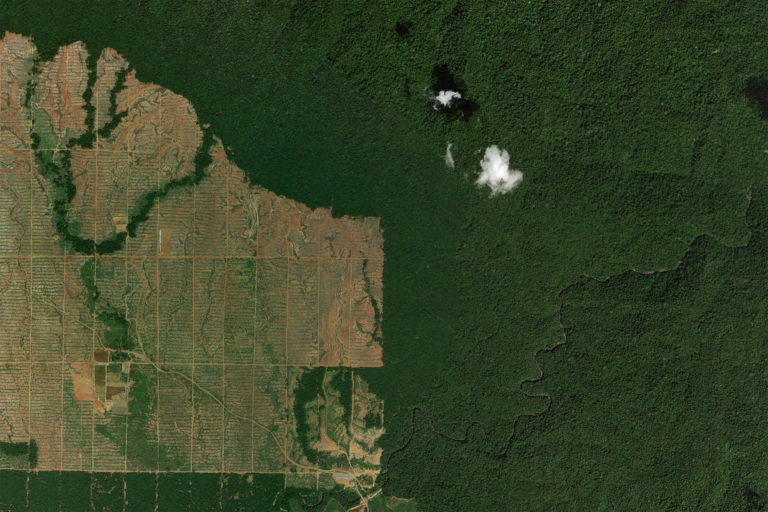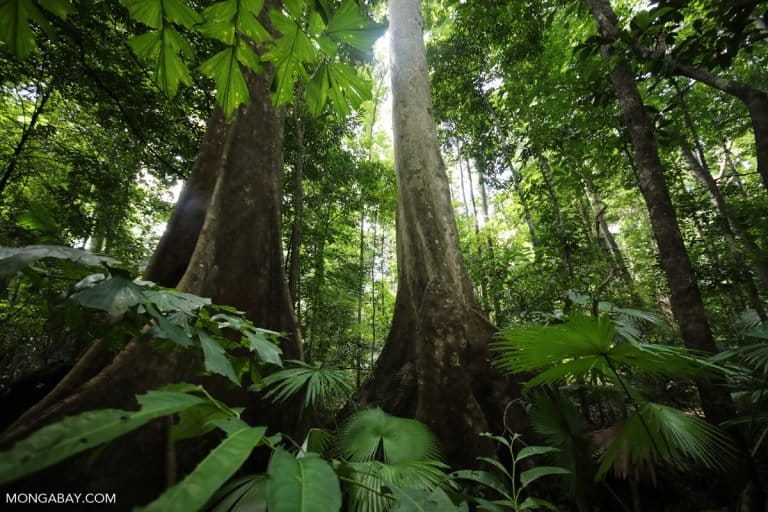- This Sunday is International Day of Forests as established by the U.N. in 2012.
- In recognition, here’s an update on some of the topics from Mongabay’s “Rainforests: 11 things to watch in 2021” published back in January.
This Sunday is International Day of Forests as established by the U.N. in 2012. In recognition, here’s an update on some of the topics from Mongabay’s “Rainforests: 11 things to watch in 2021” published back in January.
Post COVID recovery
The pandemic had mixed impacts on tropical rainforests in 2020 and the full implications probably won’t be well understood for years to come. Policy responses to COVID have also been mixed: some countries are pushing for a recovery that restructures society’s relationship with the environment; others are doubling down on practices that drive deforestation and economic disparity. In a tropical forests context, environmental regulation and law enforcement have relaxed in Brazil and Indonesia. The latter has proposed measures that could dramatically increase pressure on its forests.

Transition of power in the U.S.
Joe Biden moved quickly to restore environmental policies and regulations that had been swept away by the previous administration. In a series of executive orders issued shortly after inauguration, Biden rejoined the Paris climate agreement, established a National Climate Task Force, signaled support for plans to conserve 30% of America’s lands and oceans, and establish a moratorium on new contracts for fossil fuel extraction on public land. These moves are significant because they clearly establish that the U.S. is moving to reassert itself as a player in international climate and environmental diplomacy.

Deforestation in Indonesia
Indonesia recently released figures indicating that deforestation fell 75% between 2019 and 2020, which the government attributed to its own policy actions, including moratoriums on granting new plantation permits in certain forest areas. Others have pointed to macroeconomic factors arising from the pandemic and a wetter-than-average year, which suppressed fires. But environmentalists have expressed that the short-term drop in deforestation may be undercut in the long-term by a new deregulation law, a push to increase demand for palm oil via a biofuels mandate, and a “food estate” program that could drive large-scale conversion of forests for crop production.

Brazil
Deforestation hit a 12-year high in the Brazilian Amazon in 2020, but the first quarter of the year is the rainy season when deforestation in the Brazilian Amazon is at its lowest, so it’s too early to assess how 2021 is shaping up in terms of forest loss.
On the political front, last year’s tension between Brazilian President Jair Bolsonaro and the Biden Administration seems to have dissipated to some extent: in February John Kerry, Biden’s climate envoy, spoke with high-ranking Brazilian officials. Businesses, scientists, and former officials have established initiatives — the Amazon Protection Plan and Concertação pela Amazônia — to advise on Amazon conservation efforts, including the deployment of $20 billion pledged by the Biden Administration.
La Niña
La Niña, the climate pattern that is the colder counterpart of El Niño and tends to reduce fire risk in the Amazon and Indonesia, looks to be weakening and is not expected to continue deep into 2021. The fire season is already underway in Indonesia: hotspots have already been detected in 10 provinces.
Destabilization of tropical forests
Destabilization of tropical forests is a longer-term trend, but the evidence for destabilization continues to grow: last week a paper published in Frontiers in Forests and Global Change reported that greenhouse gas emissions from the Amazon rainforest are now exceeding the amount of carbon sequestered in its vegetation, meaning that the world’s largest tropical forest may be transitioning from a carbon sink to a carbon source. Research in the Congo Basin also found evidence that its forests are losing their capacity to absorb carbon dioxide from the atmosphere.

Assessing the impact of COVID on rainforests
Early indications, based largely on increased deforestation in the Amazon, are that forest loss rose in 2020. Data on global forest loss during 2020 should be available in the next couple of weeks.
However, earlier this month, World Resources Institute’s Global Forest Watch unveiled a new functionality that will accelerate detection of deforestation even when it is obscured by cloud cover or smoke. Global Forest Watch’s Radar for Detecting Deforestation (RADD) alerts, which use radar data from the European Space Agency’s Sentinel-1 satellites, also provide a more detailed picture on forest disturbance than Landsat imagery, enabling detection at an earlier stage.
Environmental defenders under threat
2020 was a brutal year for environmental defenders around the world, with Colombia accounting for 177 of the 331 murders counted by rights group Front Line Defenders. The trend of violence has continued into 2021.
International policy meetings back on track?
With the COVID-19 vaccine campaign rollouts expanding to more of the population in more countries, plans are moving forward to hold some of the agenda-setting climate and environmental summits that were supposed to take place last year.

